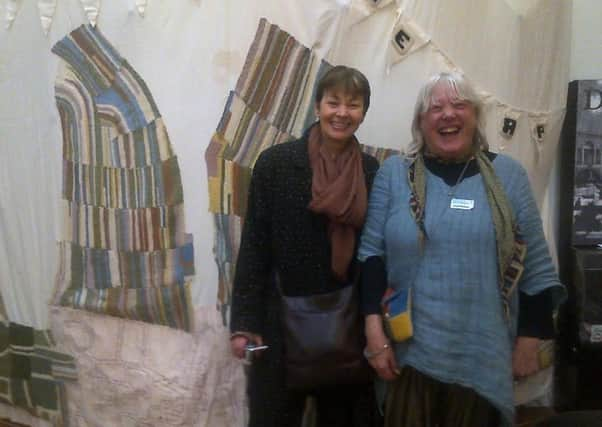Brighton craftswoman creates textiles eco-map of city


The Knitting the Map project was masterminded by Sue Craig, who leads the Wooly Umbrella Group.
Sue said: “The project began when I found a picture of the map in a book called Whitehawk Hill: Where the Turf Meets the Surf. This book, by Daniel Bangs, looks at the landscape and natural history of the Brighton area, and contains lots of colour prints of maps. While I was looking at these pictures, I thought to myself - this map would make a great knitting pattern.”
Advertisement
Hide AdAdvertisement
Hide AdThis map formed the catalyst of the project, which aimed to knit the fives laines depicted in the original map, depicted in stripes of colours.. Around 110 members of the community either knitted, spun, or dyed the wool for the map’s depiction of the five old laines of Brighthelmstone.
The artwork showcases a variety of skills, as, in addition to the traditional knitting techniques needed to produce the coloured strips for the laines, Sue is also using her embroidery skills to create the middle section of the old town.
Currently, Sue is playing with the idea of creating a linen background for the map. As with the wool used for the knitted sections, this would be a product created from scratch by the Knitting the Map team.
Sue explained: “I’m growing flax to spin into linen to use for the background linen for the map. We could go to a wholesaler and buy 12’ of linen canvas and applique our knitted sections to it - but what would we learn? We’d like to learn how to grow our own flax, process it, ret it, break it, scutch it, spin it and, finally, learn to weave it - and that’s where we are right now. Plumpton College have leant me their loom which has now been installed in my spare room, and, under expert tuition from one of my students, Claire Bessel, I’m about to learn how to warp it up.”
Advertisement
Hide AdAdvertisement
Hide AdThe challenge will be finding a way of seamlessly joining the knitting to the linen background.
“Currently, creating this linen background from scratch is an idea that we are exploring and as we do, the project will grow - as will the flax”, added Sue.
“It was exactly the same ethos when I started the Knitting the Map project and somehow encouraged others to join me on a journey of unspecified length, involving masses of hard and dedicated work, years of learning and sharing skills, before we even started knitting the coloured strips of the original interpretation”.
“When I am happy with the result of the embroidery, the only remaining task will be to create the background for the map - but we have some way to go yet”, said Sue.
Advertisement
Hide AdAdvertisement
Hide Ad“Given that I want to grow an acre of flax and I would like that acre to be ploughed by Sussex oxen, I think we’re maybe ten years away from completion”.
The map serves not only as a piece of artwork commemorating the town history, but has become a community project, showcasing the work of local people.
“This project brings together history and craft, celebrating both our histories and the work of craftspeople”, says Sue.
Sue has also established The Brighton Spinning Group and the Yurt and Felting Group. Find out more at http://www.knittingthemap.org/.